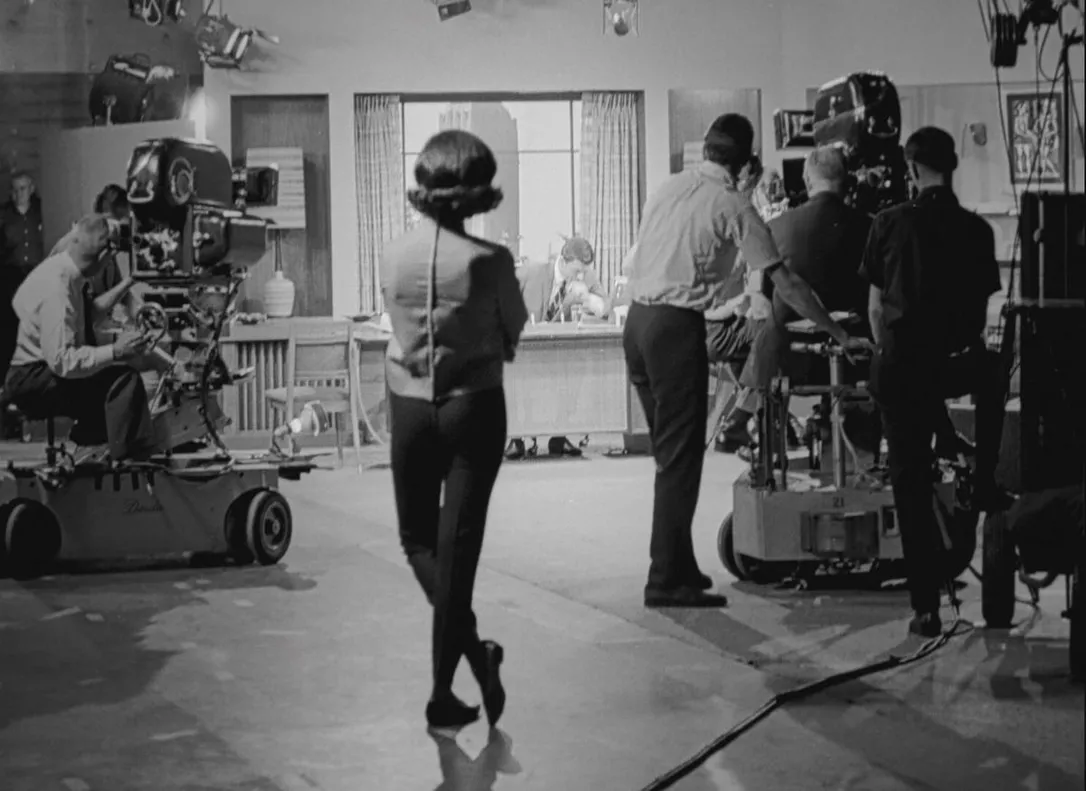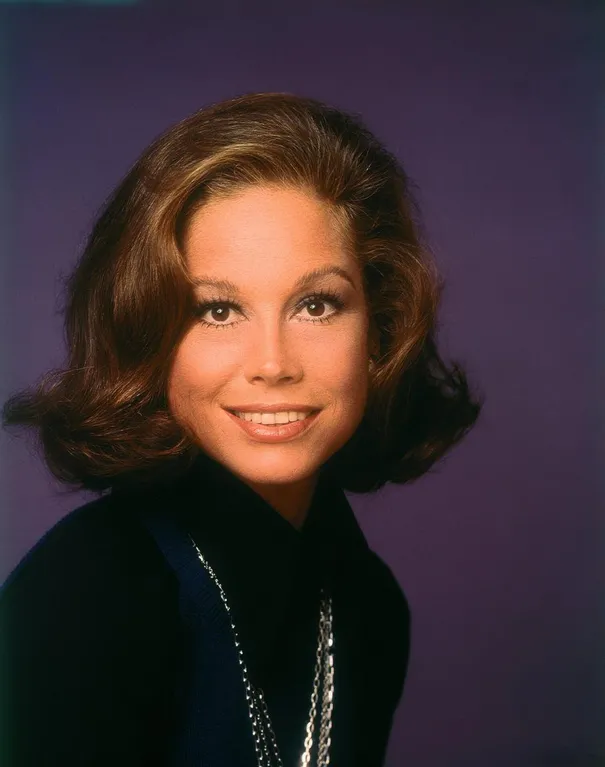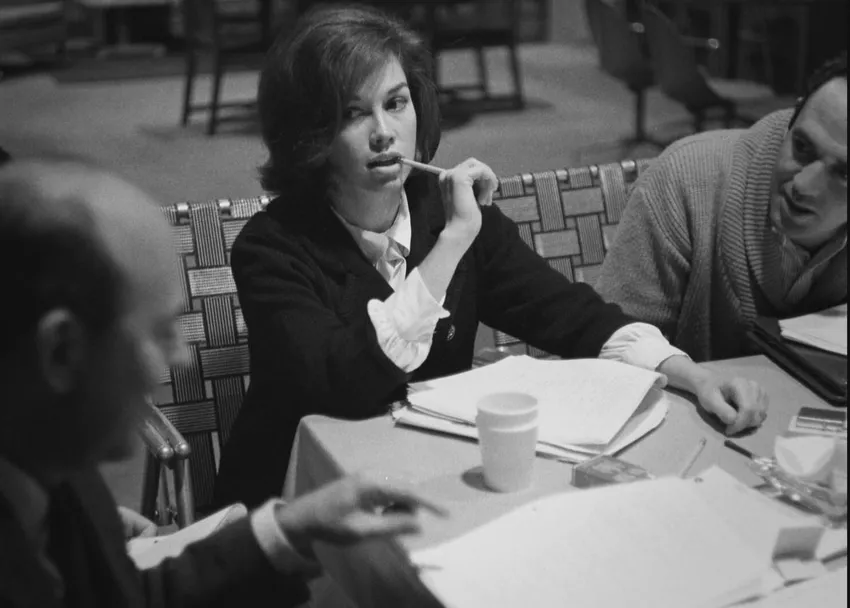It’s hard to overstate the strength of the hold Mary Tyler Moore had over the culture in the 1960s and ’70s.
A new HBO Originals documentary, “Being Mary Tyler Moore,” goes a long way to returning the late icon to her proper place in the charisma canon, cementing her rich legacy of progressive television, subversive feminism and timeless style.
Moore had two major TV roles, first as America’s sweetheart, vivacious housewife Laura Petrie on “The Dick Van Dyke Show” (1961 to ’66), then as America’s first real representation of a single career woman, Mary Richards in “The Mary Tyler Moore Show” (1970 to ’77).
As an elementary school child of a working mom in the 1970s, I had an umbilical connection to the TV and, in particular, to the repeats of these two seminal shows. Thus it was that I burst into tears a half-dozen times watching this two-hour documentary, directed by James Adolphus. The scene that resonated the most was watching Oprah Winfrey erupt into a full-on scream upon meeting Moore: Winfrey was all of us who felt Moore’s warmth, vulnerability, charm and realness melt through the cathode ray tube and into our living rooms.
Moore’s wardrobe on those two shows was hugely influential. “She shaped Americans’ whole taste level,” says fashion designer Isaac Mizrahi in the documentary, likening her influence on how we dress to that of Jackie Kennedy.
The characters Moore played wore clothes that represented the way forward.
First we had Laura Petrie. Young, adorable, funny, people-pleasing and intensely vulnerable, she had the grace of a dancer, the original career for which Moore trained and often used later in variety shows and musical theatre. Petrie floated through her scenes with Van Dyke as his dance partner in sleek capri pants, snug little sweaters like Ann Margret in “Viva Las Vegas” and black dancers’ flats.
In a throwback interview clip in the documentary, Moore said that men loved Petrie, but remarkably women loved her more, despite the fact that their husbands loved her. She was wholesome, somehow unthreatening; she was the woman whose friend you desperately wanted to be.
Moore herself thought “Laura Petrie lived a very dull life, didn’t she?” The character was imbued with Moore’s trademark spunk, but she was still waiting for Rob to get home from the office and trip over the sofa.
Early signs of Moore’s growing interest in the feminist movement broke through in a clip from a circa-1960s interview with TV host David Susskind: “I’m going to get in trouble saying this, but I really think more women should investigate working. Because I agree with Betty Friedan and her book ‘The Feminine Mystique,’ where she says women are human beings first, women second, wives and mothers third. It should fall in that order,” Moore said.
She went on to offer lessons from her own life as a working mother: “It will not hurt the family. It will not hurt the work. They can function together.”
It was Moore’s next character, Mary Richards, who really changed the social landscape. The CBS network couldn’t stomach a divorced leading lady, so Richards became a single 30-year-old woman “making it on her own,” surrounded by a supporting cast of friends.
It was her wardrobe that sucked me in: she wore pants, but they were wide-legged and high-waisted, often with a groovy chain-link belt. She paired two-piece suits with turtlenecks, and wide-collared silk blouses with sleek cardigans and pencil skirts. This was a feminine version of masculine tropes; workwear with style.
The show had the largest yet contingent of women in the writers’ room, a breakthrough that paid off because, as producer James L. Brooks says in the documentary, women know the secrets of what is in each other’s purses, as well as the secret codes of female dressing. While her groovier neighbours Rhoda Morgenstern and Phyllis Lindstrom indulged in psychedelic ’70s styles, Richards’ clothing was designed to make her bulletproof in a man’s world yet relatable in a woman’s world.
Accessories were a huge part of her wardrobe. To her work uniform, she’d add a jaunty and colourful scarf around her neck, a brilliant handbag, thick hoop earrings and a hair flip. In fact, Moore’s hair was an issue in transitioning her from Petrie to Richards. She wore a wig for the entire first season of “The Mary Tyler Moore Show” so her hair would look appreciably different from the shorter flip synonymous with her character on “The Dick Van Dyke Show.”
The remarkable thing about these two characters is how timeless they look. Even now, there is no one I would rather look like than Laura Petrie, Mary Richards or a combination of the two: sleek and sophisticated, but still feminine and body conscious.
The documentary sets out the idea that before Mary Tyler Moore, women on TV were portrayed as some combination of servant class, sex crazed or wholly puritanical. Women were expected to need and want men to take care of them, and they were dressed for an ornamental role. Moore’s characters wore clothes that allowed them agency, freedom of movement and self-expression.
While these roles showcased parts of Moore’s personality, they were never the whole truth. Her wardrobe often hinted at the volumes unsaid and the depths unplumbed.
She was the first to acknowledge her own complicated relationship with her characters and with the feminist movement. She was a divorced mom while playing an idealized wife on “The Dick Van Dyke Show,” and a remarried woman who shared a production company with her second of three husbands, Grant Tinker, when they made “The Mary Tyler Moore Show.” She admitted she wasn’t really single herself until an early 1980s stint in New York City doing dramatic theatre.
Moore went through much loss and pain — she lost her 24-year-old son to accidental gunshot wounds three weeks after her Oscar-nominated turn in “Ordinary People” — and that is the ballast in this documentary. It should come with a multi-Kleenex warning.
Still, the buoyant effect of those characters and Moore’s spirit is indelible. Nearly two decades ago, at a difficult transition in my own life, I turned the key and opened the door of a new rental apartment and the beret-tossing theme song played in my head: “You’re gonna make it after all!”



